Multinational teams of students worked together on creating ancient Greek amphoraes using Mathematics and the GeoGebra software
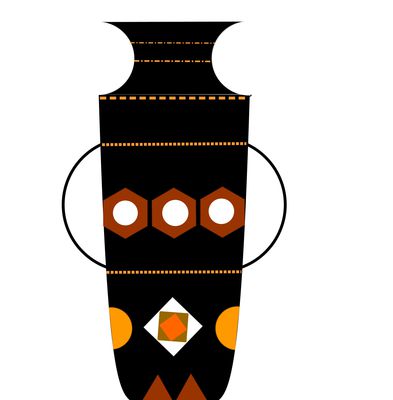
(c) Vaso Koukouraki (GR) - Renske Rocks (NL)
The outcome!!!!...
We are proud of our outcome of this activity, which is the "virtual Art Gallery".
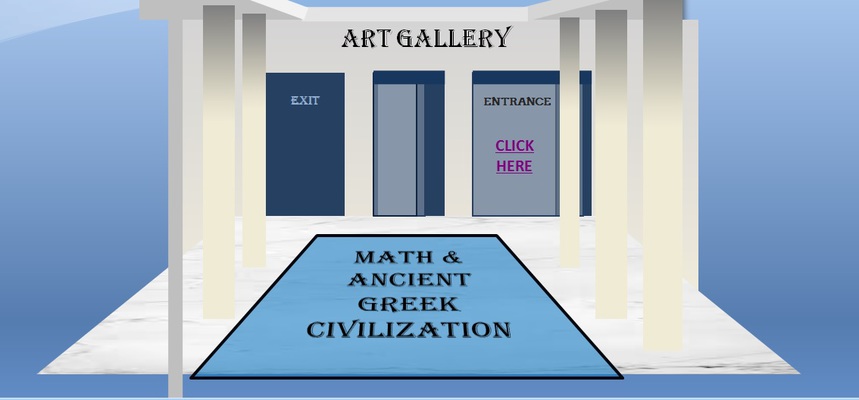
and it can be found here:
https://twinspace.etwinning.net/72066/pages/page/990391
In the following ppt we present the first floor of that gallery where the amphoraes are exhibited:
Play full screen and enjoy!!!!
VIRTUAL ART GALLERY.pptx
or watch it in slideshare:
https://www.slideshare.net/secret/5puAwamPMuzFRp
(If the GeoGebra files can't be seen, you can find all of them in the GeoGebra e book "WWM" . Follow the link:
https://www.geogebra.org/m/jr4evprf )
The students were inspired by the archaeological museum of Eleftherna (Rethymno), for the creation of the entrance of that gallery
The best creations were awarded!!
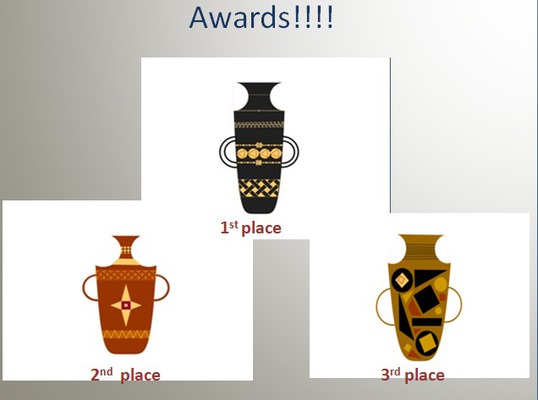
Working procedure....
Why???
That topic was chosen because:
- We can combine matematics, culture and history.
- We are able to use mathematics to analyse our cultural heritage.
- There are many ancient Greek amphoraes in Greek museums and museums all over the world that provide evidence of the history of our civilization.
How???
We carried out the following activities related to Maths and ancient Greek civilization.
First
All the students had to learn about the ancient Greek civilization
The Geometric period
The Geometric period (1100 – 750 BC), also called the Greek Dark Ages in reference to this characteristic pottery style, is a period which includes not only the historical period but also the art-historical period, which is shorter ( 900 BC – 700 BC).
Geometric art is a phase of Greek art characterized largely by geometric motifsvase painting, that flourished towards the end of the Greek Dark Ages. Its center was in Athens, and from there the style spread among the trading cities of the Aegean. The vases had various uses or purposes within Greek society, including, but not limited to, funerary vases and symposium vases.
Vases in the Geometric style are characterized by several horizontal bands about the circumference covering the entire vase. Between these lines the geometric artist used a number of other decorative motifs such as the zigzag, the triangle, the meander and the swastika. Besides abstract elements, painters of this era introduced stylized depictions of humans and animals which marks a significant departure from the earlier Protogeometric Art. Many of the surviving objects of this period are funerary objects, a particularly important class of which are the amphorae that acted as grave markers for aristocratic graves.
The following photos are taken from the greek school books : Ιστορία Α' Λυκείου, Ιστορία Δ' Δημοτικού
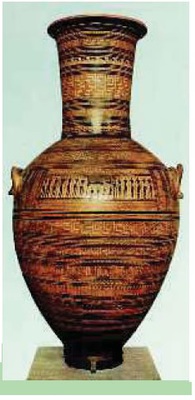
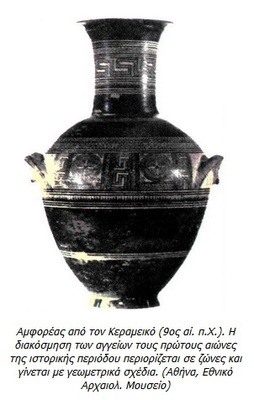
After that ...
The Greek students shot self-made instructional videos for the other students of the different countries to use.
In order to do this they had to study how to use Geogebra tools to construct equilateral triangles, squares and regular hexagons.
The instractional videos and a pdf. file....for Preparation......
Petros is teaching .... How to construct an ancient greek amphora with the use of geogebra..
Some written instuctions for the step by step construction of an amphora. In order to take more help, you can download, print and study the pdf file :
ggb instructions Erasmus.pdf
Vaso is teaching... How to constract an equilateral triangle
Athena is teaching...How to construct a square
Dimitris is teaching...How to construct a regular hexagon
Then...
joint work online started
The instructional tutorials were put online and the other student teams used them to start their own work.
The German team tried it and created the first amphora!
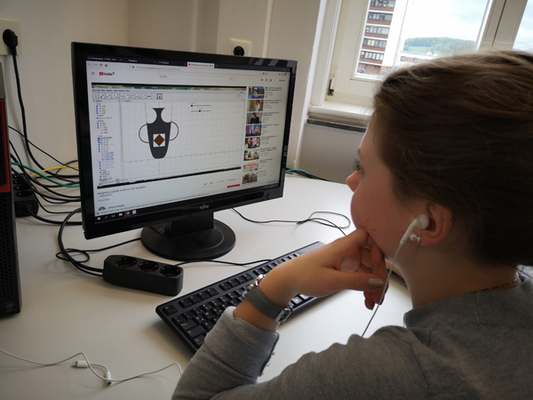
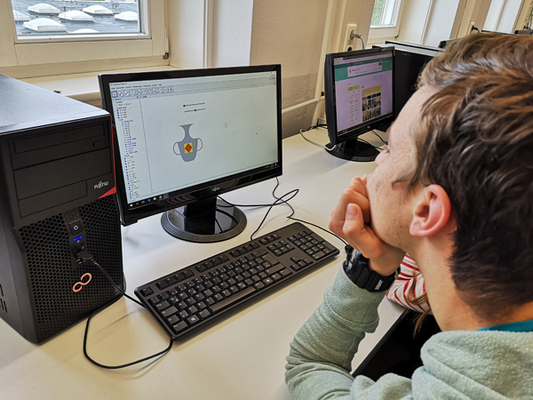
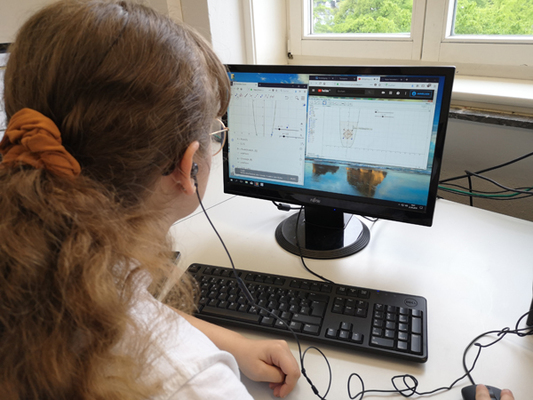
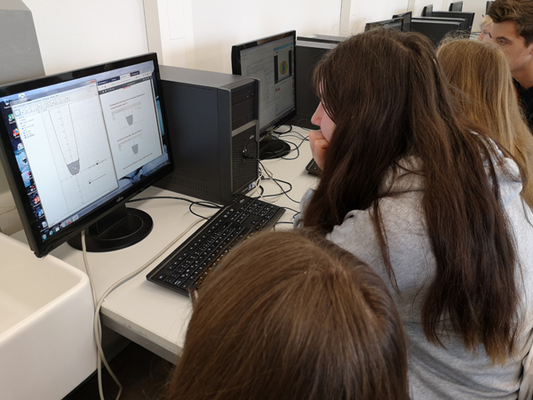
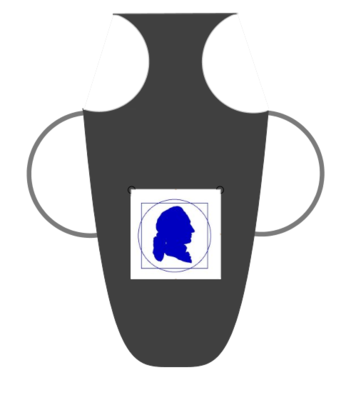
During the meeting..
The students visited the archaeological museums of Kissamos and Eleftherna (Rethymno). They were inspired by the ancient amphoraes and all the exhibits.
Before the meeting, when they were in their countries, they had studied the above instructional videos and the pdf file. So, under a good preparation, they entered the school ICT lab, where they formed 15 multinational teams of 2 students per team, and started their work....
teams amphoreas.xlsx
As a conclusion..
All the students studied and learned a part of the Greek history and civilization, combined Maths and History, used the GeoGebra tools, worked collaboratively and achieved to create their own amphoraes which are exhibited in the virtual Art Gallery above..